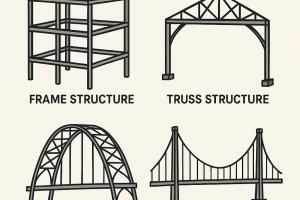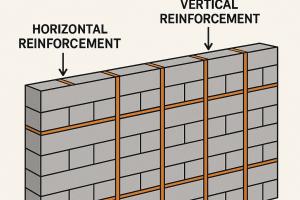Tightening Procedures in Steel Structures
Tightening Procedures in Steel Structures:
Research Council on Structural Connections (RCSC) prescribes four tightening procedures.
- Turn of the nut method
- Calibrated-wrench tightening
- Installation of alternate design bolts
- Direct-tension-indicator tightening
Tightening procedures play a crucial role in ensuring the proper assembly and integrity of fasteners in steel structures. Here are the explanations of four common tightening procedures prescribed by the Research Council on Structural Connections (RCSC), as well as some additional information on tightening in riveted connections:
1. Turn of the Nut Method:
The turn-of-the-nut method is a simple and widely used procedure for tightening bolts. It involves rotating the nut a specified number of turns beyond the snug-tight condition, which is the point of initial contact between the connected members. This method relies on the deformation of the bolt to achieve the desired preload. The amount of rotation depends on factors such as bolt diameter, length, and the required tension.
2. Calibrated-Wrench Tightening:
Calibrated-wrench tightening involves using a torque wrench calibrated to a specific torque value to tighten bolts. The torque wrench applies a predetermined torque to achieve the desired preload. This method requires careful calibration of the wrench and consideration of factors such as lubrication, bolt condition, and surface condition to ensure accurate and consistent results.
3. Installation of Alternate Design Bolts:
Alternate design bolts, such as tension control bolts or twist-off bolts, offer a controlled tightening process. These bolts have predetermined shear-off features that indicate when the desired preload is achieved. The bolts are tightened until they shear off at the specified torque or tension, ensuring proper tensioning.
4. Direct-Tension-Indicator Tightening:
Direct-tension-indicator (DTI) tightening involves the use of special washers or indicators that directly measure the tension in the bolt. These indicators provide visual or mechanical feedback to indicate when the desired preload is reached. DTI tightening allows for accurate control of bolt tension and is commonly used in critical applications.
Regarding riveted connections, the clamping force in such connections depends on the length of the rivet and the magnitude of shrinkage that occurs after the head is formed. As the head cools and solidifies, it shrinks, generating a clamping force that helps secure the connected members.
The magnitude of slip in a riveted connection is influenced by how well the rivet fills the hole. If the rivet completely fills the hole, the slip is minimized, and the connection achieves a higher degree of rigidity and strength.
In summary, the RCSC prescribes various tightening procedures for bolts, including the turn of the nut method, calibrated-wrench tightening, installation of alternate design bolts, and direct-tension-indicator tightening. In riveted connections, the clamping force depends on the length of the rivet and shrinkage after head formation, while the magnitude of slip is influenced by the extent to which the rivet fills the hole. These procedures and considerations are essential for achieving proper tightening and ensuring the integrity of steel structures.
Bolted & Riveted Connections
Bolt Connections
Types of Bolt Connections
Slip-Critical connections:
- Connection transmits the force by friction produced between the faying surfaces by the clamping action f the bolts.
- Slip-critical connections are recommended for joints subjected to stress reversal, severe stress fluctuation, impact, vibration or where slip is objectionable
Bearing type connections:
- Load is transferred by shearing and bearing on the bolt.
- Capacity in shear depends on whether shear plane intersects the body of bolt or threaded portion.





